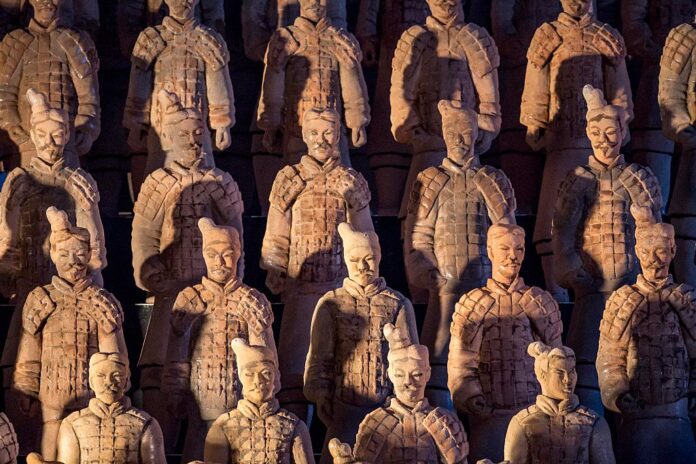A man accused of stealing the thumb of a 2,000-year-old terracotta statue during a holiday party at the Philadelphia’s Franklin Museum has agreed to a deal that will save him from a possible 30-year prison sentence, Philly Voice reports.
In 2017, Michael Rohana was a guest at the “ugly sweater” holiday party. The party was held at the museum after hours. A man slipped into a rope-fenced display of Chinese terracotta warriors found in the tomb of Qin Shi Huang, China’s first emperor. CCTV footage shows that after taking a selfie with a statue of a cavalryman, Rohan broke off something from one of the statues.
The FBI investigation began shortly after museum staff discovered that the thumb was missing from the statue. Federal investigators soon interrogated Michael Rohana at his home, and he handed the thumb to the authorities, which, according to investigators, he hid in a desk drawer.
The initial charges against Michael Rohana are the theft and concealment of a cultural heritage site from a museum. But they were removed as part of his plea deal. Rohana, who lives in Delaware, is expected to plead guilty to interstate trafficking, for which he faces two years in prison and a $20,000 fine.
During his trial in April 2019, Michael Rohana admitted that the thumb theft was a drunken mistake, which his lawyer described as “juvenile vandalism”, according to the BBC. The jury failed to reach a unanimous opinion on the harsh charges against him, and reached a dead end. This led to a mistrial.
According to the BBC, government officials in China “strongly condemned” the Philadelphia Museum for its careless handling of the terracotta statues and demanded severe punishment for Rohana. The Philadelphia City Council has issued a formal apology to the Chinese people for the damage to the statue, which was loaned to Franklin by the Shaanxi Cultural Heritage Promotion Center.
Recall that the legendary Terracotta Army – from 7 to 9 thousand clay warriors weighing 135 kilograms each, made of baked clay, was accidentally discovered by Chinese peasants digging a well. The creation of such a unique army is connected with the belief of the Chinese in the afterlife and the tradition of burial the entire palace and subjects with the ruler.
An army of terracotta warriors was buried with Qin Shi Huang, their ruler and the first emperor of China, from 210-209 BC. e. It should probably testify to the progressiveness and humanism of the ruler. His predecessors preferred to bury a living army with them to settle in the other world.
However, it should be mentioned that in addition to the terracotta army, up to 70 thousand workers were buried with their families and about three thousand concubines of the emperor were alive.

























